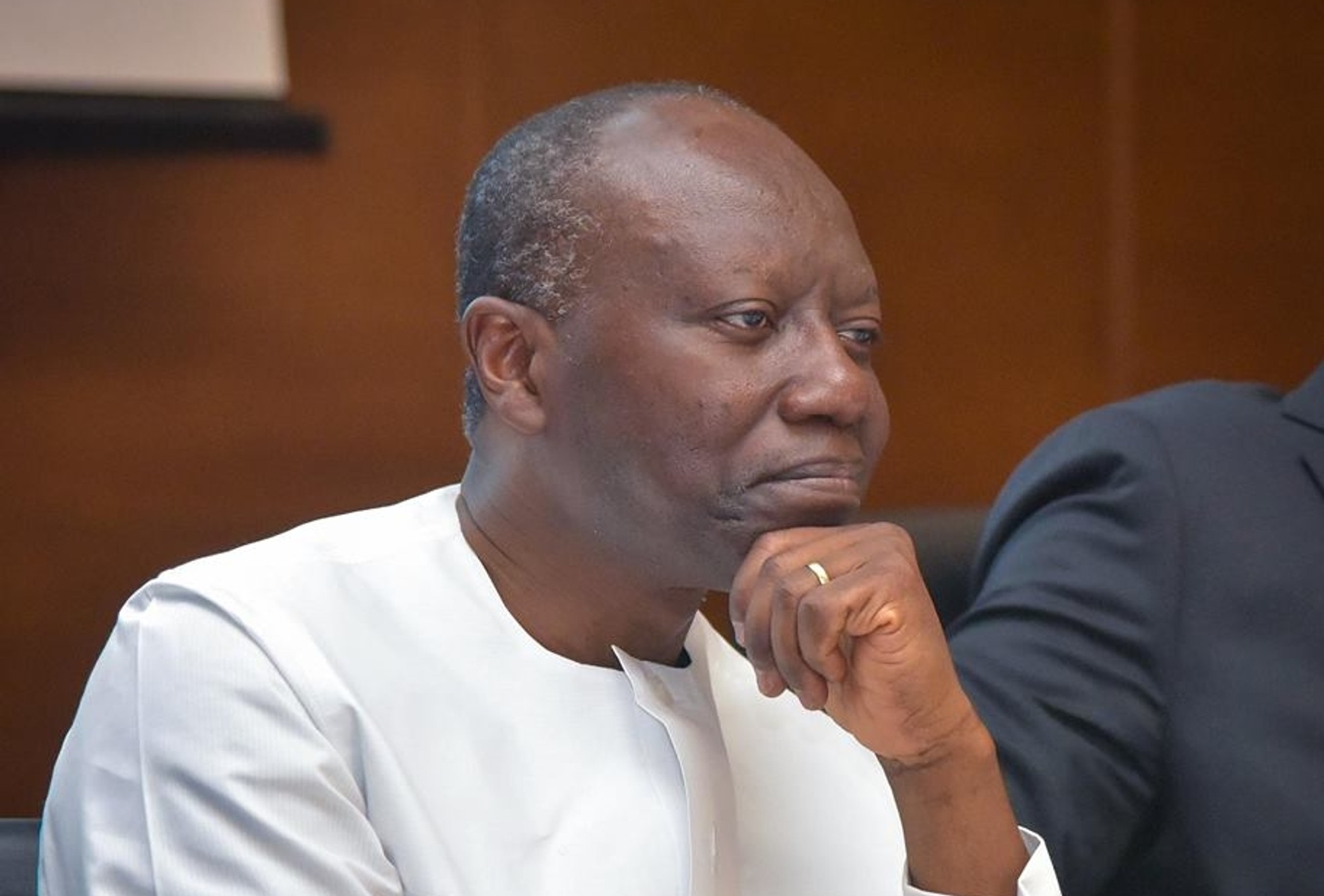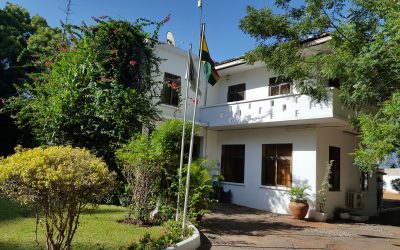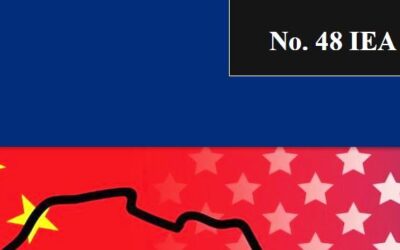This year’s Mid-year Budget Review has taken place at an unprecedented time. As we know, the Covid-19 pandemic has caused substantial disruption to the Ghanaian economy, as it has to other economies around the globe. The review cannot, therefore, be your typical one, which makes its assessment also a bit tricky. We intend to focus our comments first on the budget itself and then proceed to look at how the review addresses policies that we consider to be important for the immediate recovery as well as long-term growth of the economy, as we espoused in our pre-budget releases.
1. The Budget
The pandemic has seriously affected the 2020 budget that the Minister presented in November last year by dislodging the original revenue and expenditure estimates.
Because the pandemic has severely dampened domestic economic activity and international trade, which are the main sources of government revenue, the Minister has had to revise his revenue estimates downward by GH¢ 13.4 billion from GH¢ 67.1 billion (16.9% of GDP) to GH¢ 53.7 billion (13.9 % of GDP). The tax component of revenue has been similarly reduced by GH¢ 6.9 billion from GH¢ 49.2 billion (12.4% of GDP) to GH¢ 42.3 billion (11.0% of GDP). In our pre-budget press release, we raised concerns about Ghana’s exceptionally low tax/GDP ratio, which falls substantially short of the middle-income average of 25% and the minimum threshold of 20% under the Eco-currency arrangement. We pointed out that Ghana loses as much tax revenue as it collects through various channels, including the informal sector, exemptions, evasion, illicit financial flows, property taxes, fraud, corruption and administrative lapses. We called for interventions to plug the loopholes in the tax system through strict surveillance and sanctions regimes. We demonstrated that if we were to do so, we could double our tax revenue/GDP ratio to at least 20%. We recognize that some of the interventions we suggested require a longer time to implement than the six months left for the current budget. But we expected to see at least some actions initiated on the more amenable ones like tax exemptions, whose bill has been languishing before Parliament, property taxes, tax compliance and tax administration. The budget review does not provide medium term estimates. But even using the more optimistic estimates in the original 2020 budget, we do not see the tax revenue/GDP ratio going above 13% by 2023. This will seem like just tinkering with our tax effort, without any serious attempt to move it up to international standards by plugging the numerous loopholes that we have enumerated. If we maintain this low tax effort, the fiscal space to undertake critical development projects and programmes will be equally constrained.
As a result of the extra spending required to respond to the pandemic, expenditure has been revised upward by GH¢ 11.7 billion from GH¢ 86.0 billion to GH¢ 97.7 billion. It is this additional expenditure that the Minister is asking Parliament to approve as supplementary appropriation. The bulk of government expenditure is intended for statutory payments, transfers and subsidies (GH¢ 27.7 billion), compensation (GH¢ 27.1 billion) and interest (GH¢ 26.3 billion), which together amount to GH¢ 81.1 billion and account for 83% of total expenditure. In our pre-Budget statement, we expressed concern about the excessive earmarking or rigidities associated with government expenditure. These three non-discretionary items are taking as much as 83% of total expenditure, leaving only 17% for the discretionary items, i.e. goods and services and capital expenditure (CAPEX). Even more disturbing is the fact that the total government revenue of GH¢ 53.7 billion cannot fund these three items, implying that the unfunded portion will have to be financed by borrowing, which will also additionally fund the discretionary items. Also worrying is the fact that CAPEX, which is needed for growth, is being increasingly squeezed in our budgets. In fact, in the revised budget, CAPEX amounts to a mere GH¢ 9.3 billion or 9.5% of total expenditure. It is also just 2.4% of GDP, a figure that is very low by international standards. Indeed, developing countries need to invest at least 15% of their national income to spur their growth. We called for reforms to realign expenditure and address the inherent rigidities. Our recommended reforms included: i) public sector reforms to reduce the wage bill, which used up 47% of tax revenue in 2019; ii) debt restructuring combined with fiscal consolidation to reduce interest payments, which used up 46% of tax revenue in 2019; iii) reform of statutory funds to ease their growing burden on the budget; and iv) scaling up of CAPEX to spur long-term growth. Unfortunately, the budget review did not appear to contain adequate measures to these ends. Granted that the remaining period of the 2020 budget may not permit these reforms, we expect them to be given serious attention in subsequent budgets.
The revisions to revenue and expenditure have raised the deficit from GH¢ 18.9 billion (4.7% of GDP) to GH¢ 44.1 billion (11.4% of GDP). The deficit is relatively high by recent records. It is, indeed, more than twice the 5% ceiling in the Fiscal Responsibility Act, which has had to be suspended for the time being. The increase in the deficit is GH¢ 25.2 billion, which is the total resource gap that has opened up as a result of the shortfall of GH¢ 13.4 billion in revenue and the additional GH¢ 11.7 billion in expenditure. And this is the amount that has to be financed from borrowing. Of this amount, GH¢ 7.8 billion (net) is being sourced externally, while domestic financing (net) is GH¢ 17.4 billion. Of the domestic financing, Bank of Ghana is providing GH¢ 10.0 billion. We have suggested that Bank of Ghana must support Government at this critical time with cheaper and more convenient financing, as the alternative of going to the market will be more expensive. Bank of Ghana’s support to Government has necessitated the suspension of the existing agreement on zero financing of the budget. When the situation normalises, this condition can be duly reinstated.
The borrowing necessary to finance the resource gap is going to take the public debt to a very high level. The Minister reported that the debt stood at GH¢ 258.3 billion (or 67.0% of GDP) at the end of June. Going by the additional financing estimated for the second-half of the year, the debt level could reach GH¢ 270 billion (or about 70% of GDP) at the end of 2020. It has to be said that borrowing to fill the resource gap is inevitable since it is necessary to save lives, livelihoods and the economy. It is, indeed, a necessary evil—it has to get worse before it gets better. According to the medium-term fiscal and economic growth profiles, the debt ratio could stay above the 70% level, deemed to be the sustainability threshold for countries like Ghana, until 2022. The servicing costs of the debt are also going to be substantial. As noted above, in 2019, debt servicing used up as much as 46% of tax revenue. And if this should escalate further, the fiscal space would be considerably narrowed. To help abate the debt service burden, we have recommended a comprehensive debt management strategy, including restructuring, refinancing (or re-profiling) and buybacks. We are happy to note that the Minister recognized the problem of the high cost of debt and indicated that Government is trying to address it under a Medium-Term Debt Management Strategy. This strategy appropriately includes issuances/tap-ins of medium-term and long-term instruments and the refinancing of some maturing T-bills and bonds to reduce vulnerabilities in the debt portfolio. It also involves initiatives to achieve an appropriate financing mix of external and domestic borrowing so as to mitigate the costs and risks. But the bottom line is that if we also take measures to raise more revenue and streamline and rationalise expenditure, as we have been advocating, then we would be able to close the financing gap and reduce borrowing and further debt accumulation, which would ease the debt service burden.
2. Economic and Social Intervention Measures
Government has introduced several intervention measures to mitigate the impact of the pandemic on businesses, households and livelihoods. The measures, some of them quite innovative and bold, have taken extensive planning and effort and have involved the mobilisation of considerable resources and logistics.
A Business Support Scheme has been introduced to provide support to micro, small and medium-sized enterprises (MSMEs) in the form of soft loans. MSMEs have been hit the hardest and the Scheme will help save many of them from possible liquidation, with potentially disastrous consequences for their workers and dependents. Free water is being provided for all households over several months. Electricity is also being subsidized for all customers, with life-line customers enjoying entirely-free services. The most comprehensive and far-reaching interventions have been introduced for health workers—and rightly so. All health workers have been exempted from paying taxes. Frontline workers have been given 50% extra salary. Sickness insurance has been arranged for a selection of them. And overtime and risk-based payments have been made to key frontline workers. These packages appropriately recognize the unique and selfless sacrifices made by health workers during the pandemic, putting their own lives at risk in the process. The economic impact of the pandemic has been felt more by the poor and vulnerable individuals especially during lockdowns, as these people live virtually from hand to mouth. A large number of such individuals have been assisted with cash transfers under the Livelihood Empowerment Against Poverty (LEAP) programme. An equally large number were also given food handouts during lockdowns in the Greater Accra and Greater Kumasi areas.
In the budget review, the Minister also mentioned the introduction of a Covid-19 Alleviation and Revitalisation of Economic Enterprises Support (CARES) programme. Phase 1 of the programme, the stabilization phase, spans July-December. It involves extension of the duration and coverage of some of the programmes already put in place to provide relief and support to Ghanaians, ensuring food security, protecting businesses and workers, and strengthening the health system. Importantly, the programme reinforces the initial economic and social intervention measures introduced by Government.
3. Economic Policy Initiatives
The pandemic has deeply affected the economy. As a result, the overall growth in 2020 is now projected at just about 0.9% compared with the pre-Covid-19 estimate of 6.8%. The projected growth rate is the lowest we have seen in decades. But it is not only Ghana that is experiencing this huge slump in its economy. It is happening everywhere across the globe, with some major economies even falling into recession. The aggregate growth of 0.9% reflects growth of 3.7% in agriculture, 0.8% in industry and -0.8% (contraction) in services. The figures show that agriculture, helped by good rains, has been the least impacted. It also gives credence to Government’s agricultural policy, without which the effect of the pandemic would have been greater. There was initial jump in food prices due to disruptions in supply and panic buying, but prices have generally come down recently. Clearly, industry, which includes oil, has been severely impacted. But above all, the services sector has suffered the biggest hit, contracting by 0.8% in the year as a whole. The pandemic has, clearly, plunged the economy into a deep hole.
On the assumption that the pandemic would abate significantly by the end of the year, an assumption that is subject to considerable uncertainty, the economy is forecast to rebound from the much-depressed base, with aggregate growth estimated to average about 5.4% over the medium-term, 2021-24. Agricultural growth is projected to average 4.8% during the period; industrial growth, 5.8%; and services growth, 5.1%. It has to be said that even though the medium-term forecasts have been affected by the initial impact of the pandemic, the projected aggregate and sectoral growth rates are still quite moderate. At this pace of growth, it would take a much longer time for Ghana to transition to upper middle-income status. The question that needs to be asked is whether this is Ghana’s potential growth profile. We do not believe that it is. Indeed, Ghana is capable of growing at much higher rates if we beef up our policies.
The Budget Review articulates quite comprehensive and far-reaching policies to get the economy back on track under the Second Phase of the CARES programme. According to the Minister, the main aim of the programme is to support the economy to emerge quickly from the pandemic and ensure that it is stronger and more resilient. This will be in consonance with the President’s Ghana Beyond Aid (GBA) agenda. Appropriately, emphasis is being placed on: i) improving the private sector environment by supporting Ghanaian businesses in targeted sectors such as light manufacturing, pharmaceuticals, textiles & garments, machine tools, ICT and the digital economy; ii) modernising agriculture though support for commercial farming and attracting the youth into farming; iii) promoting agro-processing; and iv) supporting AfCFTA with the aim to make Ghana a regional financial, manufacturing and logistics hub. The Minister also indicated plans to review and optimise implementation of Government’s flagship initiatives, including: a) 1D1F and PFJ/RFJ; b) infrastructure projects; and c) natural resources exploitation. This review is in the right direction as it would provide the opportunity for Government to streamline and improve the initiatives where necessary.
These policies, in general, are important for the economy’s immediate resuscitation and long-term growth. However, the fact that, in spite of these policies, the economy is still projected to grow at a moderate pace tells us that we need to do even more. And we have articulated key policy initiatives in our pre-Budget Review statement that, we believe, could catalyse the transformation of the economy, raise the growth profile and deliver higher living standards to the people. We have already noted under the section on the budget above how important it is for us to scale up revenue mobilisation, which is critical in raising adequate resources to support the economy’s growth. To this call, we add here other policy initiatives that essentially amplify the need for us to leverage our own resources to internalise our growth and development. This call is very much in consonance with the President’s vision of Ghana Beyond Aid, which is aimed at leveraging our resources to build a self-reliant and self-sufficient economy. The pandemic has actually made this new policy paradigm even more imperative since the associated disruption of global supply chains has highlighted the vulnerability of individual countries and the importance for each one to try to become as internally self-sufficient and self-reliant as possible.
To elaborate, we drew attention to the fact that our natural resources represent the low hanging fruitsfor mobilizing resources to support the country’s growth. Ghana has untapped natural resource wealth in the form of oil, gas, gold, manganese, bauxite and iron ore, among other resources, that is estimated to be worth over US$12 trillion. It is inconceivable that we have so many riches below the ground, yet are afflicted with so much poverty above it. This situation is the result of our failure to exploit our natural resource wealth prudently and use it to transform the economy through industrialisation. For decades, we have offered our minerals to foreign companies on generous terms, including giving them disproportionate shares, liberal tax rates and export retention rights. The result of these lavish concessions has been the impoverishment of our economy and mining communities. Unfortunately, we have been repeating the same mistakes in our oil contracts, which have been based on concessions whereby we give investors ownership of oil blocks while Ghana benefits from meagre royalties, taxes and carried and participatory interest. Since the onset of oil production, Ghana’s share of the total output is estimated to have averaged just about 15% and is valued around US$5 billion. This means that foreign oil companies have pocketed 85% or nearly US$30 billion of the total proceeds. How can this be justified? Concession contracts only serve the interest of foreign investors—and their Ghanaian cohorts. Even as far as oil and gas resources are concerned, concession contracts are contrary to the Petroleum Exploration and Production Act, 2016 (Act 919). The Act requires contracts to be signed on a product-sharing basis whereby Ghana and the investor agree on a formula to share the output without the investor being offered any concessions. We should ensure that Ghana receive maximum benefits under resource contracts signed with foreign investors.
We cannot have a durable recovery and sustained long-term growth without tapping the potential of our agriculture, which remains the bedrock of the economy. Ghana is still predominantly an agrarian economy, with agriculture employing over 60% of the labour force and contributing about 19% of GDP (in 2019). Agriculture’s contribution to GDP has fallen progressively from 45% in 1990. In the course of a country’s development, it is normal for agriculture’s contribution to GDP to decline, as increasing productivity allows excess labour and other resources tied to the sector to be released into other economic activities. That is how countries evolve from primary agrarian to secondary industrial and tertiary service economies. In the Ghanaian situation, however, the decrease in agriculture’s contribution to GDP over the years has been driven largely by declining or stagnating productivity, which is not desirable. We still lack food affordability and security for all. The fact that food accounts for 43% of the average Ghanaian’s monthly spending according to the CPI weights, while millions of Ghanaians cannot afford two square meals a day, suggests that agriculture still faces serious challenges. Agricultural productivity can be enhanced by supporting large-scale commercial agriculture capable of leveraging modern equipment and farming methods. We are, therefore, pleased to note that this is receiving the attention of Government, as indicated by the Minister. At the same time, peasant farmers should be supported with irrigation facilities, high-yielding seed varieties, fertilizer and quality extension services. It is important to develop the entire value chain in agriculture from production to storage to processing to marketing. Government’s agricultural policy initiatives articulated in the Budget review—the PFJ/RFJ, 1V1D, 1D1F—represent key elements of such a value chain. It has to be emphasized that the post-production management of food is as important as the production itself if availability all year round is to be assured. We see too many pitiful instances of abundant farm produce in peak seasons going to waste because of lack of storage and markets. This is not only wasteful but a clear disincentive to farmers. The National Food and Buffer Stock Company is an important scheme for extending the life span of crops and it should be fully supported. Also, ensuring adequate transportation infrastructure and marketing facilities is critical to reduce the usual large mark-ups of retail prices over farm-gate prices. Further, agriculture requires special support in the form of cheap credit facilities. This is where Government and the Central Bank should team up to provide subsidized credit facilities to the sector through a designated agricultural finance institution. Left to the dictates of the free market, the financing of agriculture would be ignored since it is regarded as a risky activity. Finally, agriculture should be closely linked to industry by supplying the necessary inputs for the former. We welcome Government’s planned support for agro-processing, which is an important step in this regard.
Industrialisation is a key propeller of economic growth. The Industrial Revolution that started in the mid-19th century, catapulted the United States and Europe into first-world status within a generation, while other countries untouched by the revolution lagged behind. Unfortunately, Ghana is less industrialised today than it was in 1970, with manufacturing output as a ratio of GDP dropping by about a third from 15% to 10%. The ‘de-industrialization’ of the country in the past 50 years has retarded growth of the economy and growth in living standards. The need to reverse these negative trends has become more imperative. As we have noted above, we have comparative advantage in natural and agricultural resources and this should be leveraged to spur industrialisation and economic transformation. We wish to emphasize, in particular, the need to link industrialisation to our agricultural resources so as to maximize the value of the latter. Our huge arable land has allowed us to acquire comparative advantage in agricultural products like cocoa, palm, rubber and wide-ranging food items, which can feed industries to produce consumables for the local and international markets. For, example, we have long paid lip service to processing and adding value to our cocoa before exporting it, but have made limited progress in that regard. Meanwhile, the total global raw cocoa market is estimated at US$10 billion, whereas the chocolate market is worth ten times as much at US$100 billion. Therefore, why we continue to export cocoa in its raw form in the quest for part of the meagre US$10 billion and not target the larger US$100 billion market beats the imagination.
We take note of Government’s 1D1F industrialisation strategy and suggest that it should be informed by our industrialisation experience and international best practice and refined as necessary. It is important to ensure that the planned factories are appropriately linked to our natural resource supplies to ensure their competitiveness and sustainability. In addition to the supply chain and product-type considerations, care should also be taken in deciding about factory sizes, locations, ownership and management structures. Some have argued that dotting factories all over the country may not be enough in industrialising the economy. More successful countries like China, South Korea, Malaysia and Thailand are known to have created large industrial parks comprising strategic industrial conglomerates so that industries could benefit from contagion in terms of technology transfer and economies of scale. Silicon Valley in the US, for example, created a magnet for the conglomeration of the best technology companies in the world. Maybe we can learn useful lessons from these blueprints.
We also believe that, like the experiences of the successful countries mentioned above, the state must lead and drive the industrialisation process. The curtailment of President Nkrumah’s state-led industrialisation strategy and subsequent privatisation of most of his industries, contributed to the de-industrialisation of the country. We cannot rely on the free market and private enterprise to drive our industrialisation—at least not in the initial stages. We do not suggest that the private sector should be ignored in the process of industrialisation. The sector can play a supplementary role. In particular, we believe that small and informal sector industries should be nurtured and supported to grow and flourish. We are, therefore, pleased to note that Government intends to create the necessary enabling environment for the private sector, including, as stated by the Minister, through improved regulations and implementation, digitization and expansion of access to finance and skills training. Also critical for effective working of the private sector are good infrastructure, stable markets, favourable trade policies, R & D support and a stable macroeconomic environment.
4. Conclusion
In conclusion, we wish to note the following:
- In the context of the Covid-19 pandemic, this year’s Mid-Year Budget Review faced unprecedented challenges. Government has endeavoured to navigate the rather difficult terrain. Particularly noteworthy are the efforts to raise a substantial amount of resources from a variety of sources to fund the many socio-economic programmes necessitated by the pandemic.
- Government has introduced several intervention measures to mitigate the impact of the pandemic on businesses, households and livelihoods. The measures, some of them quite innovative and bold, have taken extensive planning and effort and have involved the mobilization of considerable resources and logistics.
- Government has articulated a fairly-comprehensive set of policies to spur the immediate recovery and long-term economic growth. The policies include the government’s own initiatives as well as others it intends to empower the private sector to undertake by creating the necessary enabling environment. In spite of Government’s policy efforts, however, the economy is projected to grow only at a moderate pace over the medium-term, which is not adequate to enable the country transition into middle-income status and improve living standards significantly within a reasonable time span.
We believe that to be able to achieve these goals, we need to take additional steps. In particular, we need to scale up significantly our domestic revenues by plugging the many existing loopholes that we have enumerated. We should also leverage our vast natural resource wealth to transform the economy and achieve internal self-sufficiency and the Ghana Beyond Aid vision. More importantly, Covid-19 has taught us that we need to internalise our development by taking ownership of our economy and utilising fully our comparative advantage in natural and human resources.






0 Comments